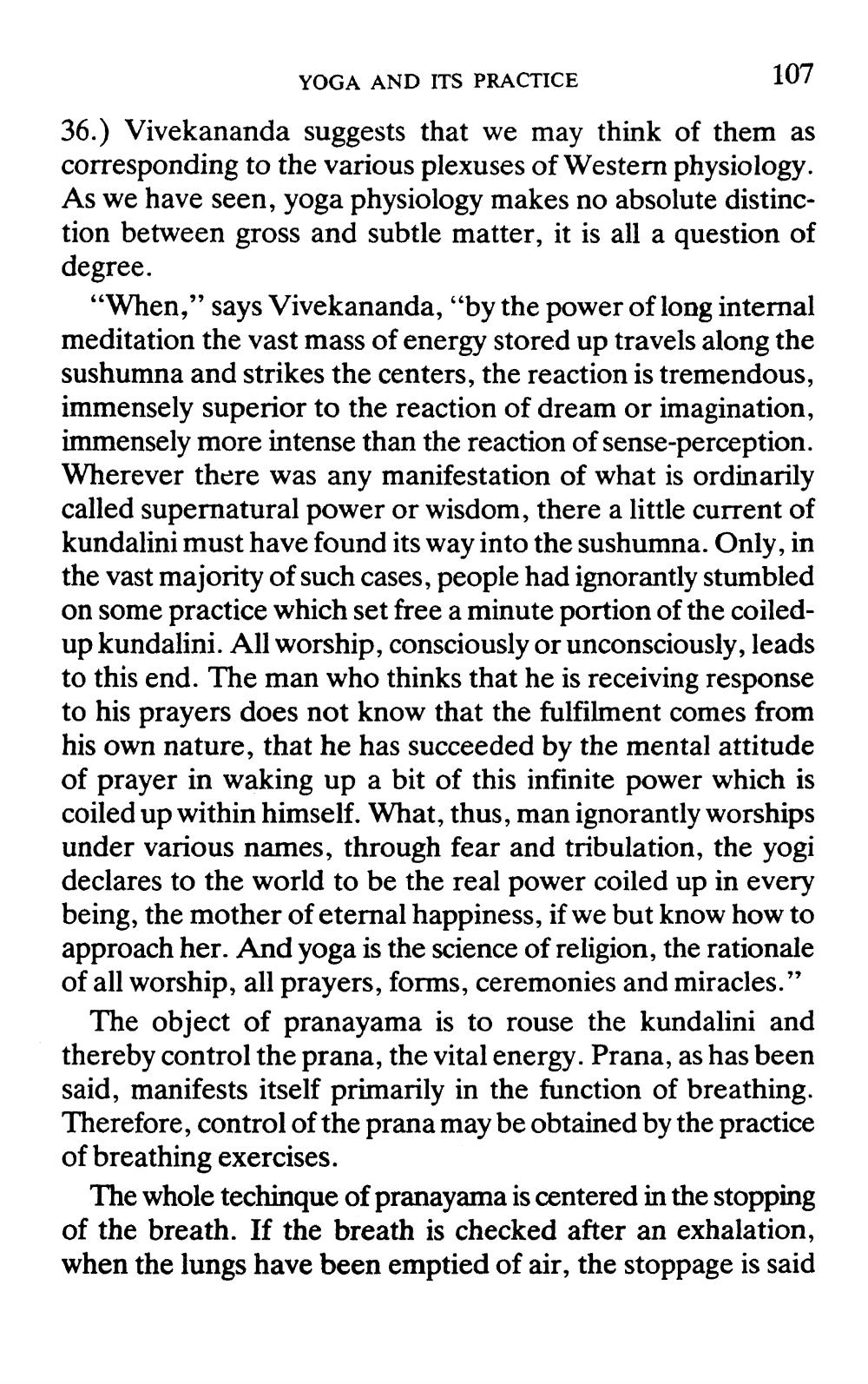________________
YOGA AND ITS PRACTICE
107
36.) Vivekananda suggests that we may think of them as corresponding to the various plexuses of Western physiology. As we have seen, yoga physiology makes no absolute distinction between gross and subtle matter, it is all a question of degree.
"When,” says Vivekananda, “by the power of long internal meditation the vast mass of energy stored up travels along the sushumna and strikes the centers, the reaction is tremendous, immensely superior to the reaction of dream or imagination, immensely more intense than the reaction of sense-perception. Wherever there was any manifestation of what is ordinarily called supernatural power or wisdom, there a little current of kundalini must have found its way into the sushumna. Only, in the vast majority of such cases, people had ignorantly stumbled on some practice which set free a minute portion of the coiledup kundalini. All worship, consciously or unconsciously, leads to this end. The man who thinks that he is receiving response to his prayers does not know that the fulfilment comes from his own nature, that he has succeeded by the mental attitude of prayer in waking up a bit of this infinite power which is coiled up within himself. What, thus, man ignorantly worships under various names, through fear and tribulation, the yogi declares to the world to be the real power coiled up in every being, the mother of eternal happiness, if we but know how to approach her. And yoga is the science of religion, the rationale of all worship, all prayers, forms, ceremonies and miracles."
The object of pranayama is to rouse the kundalini and thereby control the prana, the vital energy. Prana, as has been said, manifests itself primarily in the function of breathing. Therefore, control of the prana may be obtained by the practice of breathing exercises.
The whole techinque of pranayama is centered in the stopping of the breath. If the breath is checked after an exhalation, when the lungs have been emptied of air, the stoppage is said




